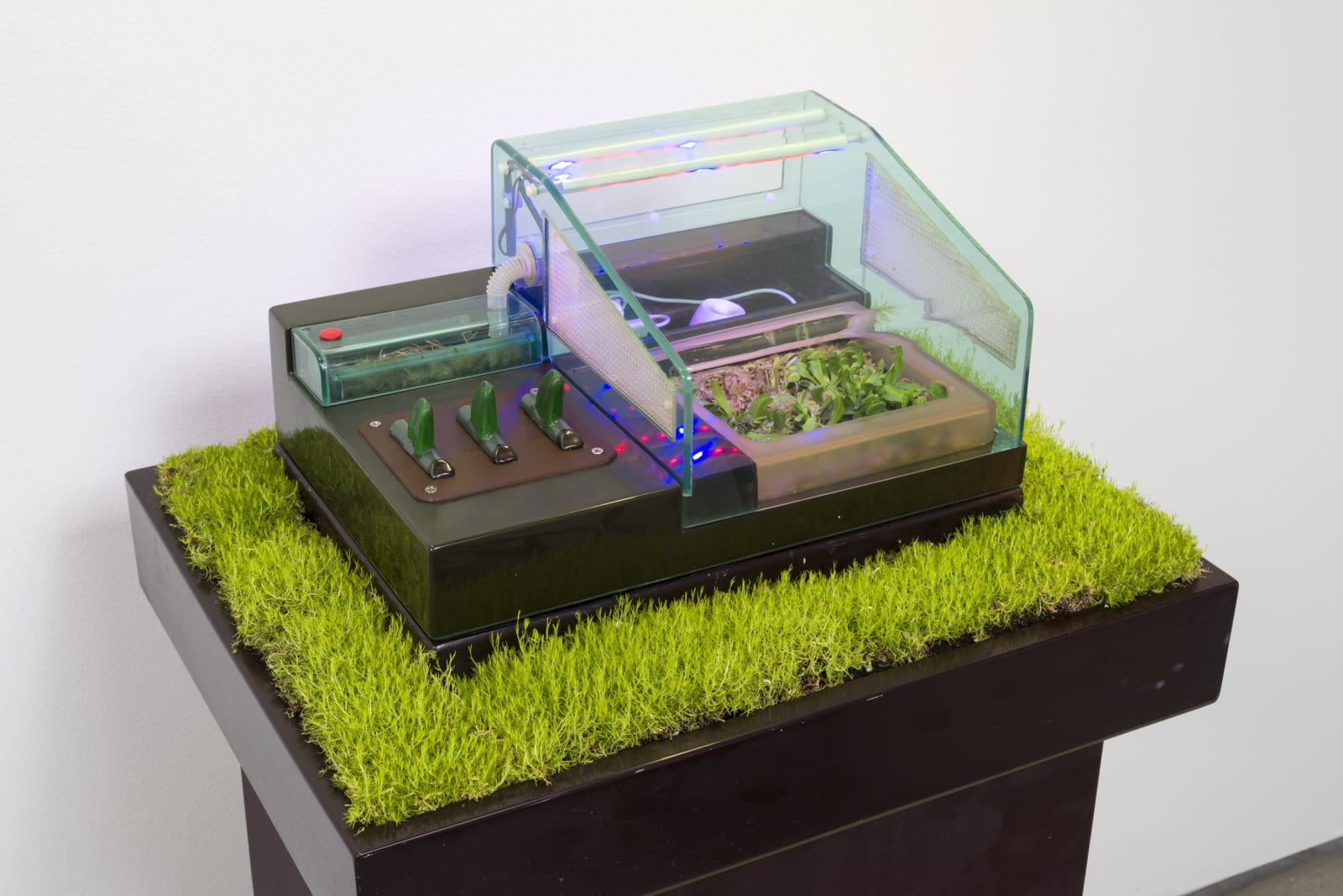In 1967, the year he graduated from the University of California, Los Angeles, Carl Cheng registered the trade name John Doe Co. and, soon after, began stamping it on his sculptures. Up to this point, much of Cheng’s work had a formal relationship to photography – he was taught by the influential artist-photographer Robert Heinecken, who was instrumental in widening the field – but, as John Doe Co., Cheng began producing objects that seem more like crackpot inventions than image-based sculptures.
The exhibition, titled ‘Nature Is Everything – Everything Is Nature’, draws together Cheng’s disparate output by highlighting his environmental concerns, which he often expressed in distinctly unnatural materials. The showstopper is a row of four identical Erosion Machines (1969), fluorescent-yellow tanks on wooden stands. The machines – each bearing the John Doe Co. insignia – are divided into two compartments. On the left, behind Plexiglas, metal shelves hold cakes of plaster and cement, spottily painted in lurid colours. In the right compartment, under blue light, jets of water furiously pummel away at another chunk of aggregate, which is slowly eroded by the water. An on-off switch grants each machine’s owner full control over the rate of the process; these ‘erosion rocks’ are exhibition copies and the purchaser is supplied with a new set of blanks.
Beyond their toxic colours and energy-intensive mechanics, the Erosion Machines are lacquered with several coats of irony. The notion that humankind is not wholly the master of its environment, only a vulnerable part of it, was a relatively far-out position in 1969, when Cheng was already tuned-into the nascent environmentalist movement. These noisy boxes, with their bathetic simulation of geomorphic processes, announce not the mastery of their maker but the hubris of their owner-operators. What is more satisfying: the crude, deformed lumps post-erosion or the Technicolor cakes fresh from the artist’s studio?
Part of Cheng’s motivation for subsuming his identity within a theatrically anonymous corporate brand was pragmatic: he found that manufacturers of industrial materials took him more seriously if he presented himself as a company, not an artist. Beyond this, however, his sculptures critique the desires and expectations inherent to the consumption of mass-market commodities. Four Specimen Viewers (1970) resemble bubblegum-coloured typewriters in cerulean Plexiglas cases. The specimen slides, which gallery-goers can insert into the backlit viewer, hold scraps of indeterminate organic matter and paint, some with eye-like dots that make them resemble weird, dead sea creatures – abject disappointments compared to the shiny machines built to inspect them.
The ironic humour in other pieces sometimes approaches glibness. Emergency Nature Supply Kit (E.N. Supply, No. 271-OJ) (1971) consists of a resin container for a patch of grass not much bigger than a postage stamp, and a small speaker that plays canned birdsong when activated by a sensor. The entire apparatus fits into a pyramidal white case, which Cheng filmed his partner Felix carrying through the Osaka subway. Another John Doe Co. production, Supply and Demand (1972), sustains Venus fly trap plants with a population of cultivated fruit flies. The circuits of meaning in these works are just as airless as the hermetic biological systems that they contrive. At their best, however, Cheng’s inventions have a confounding earnestness, offering us something we never knew we needed or wanted, but which suddenly seems utterly essential to modern life.



